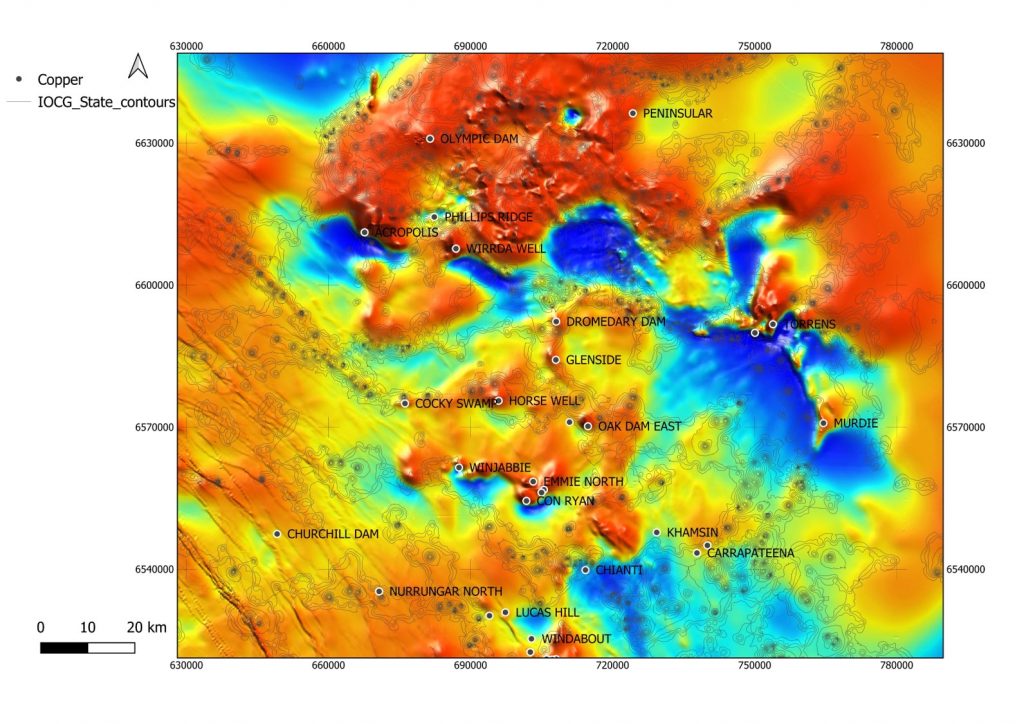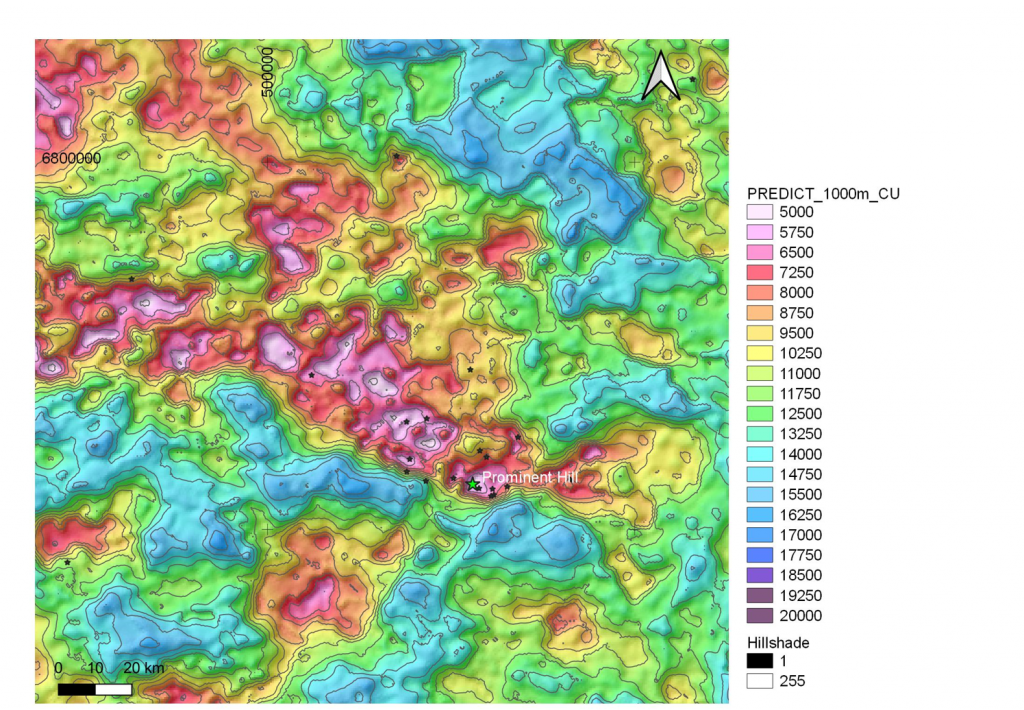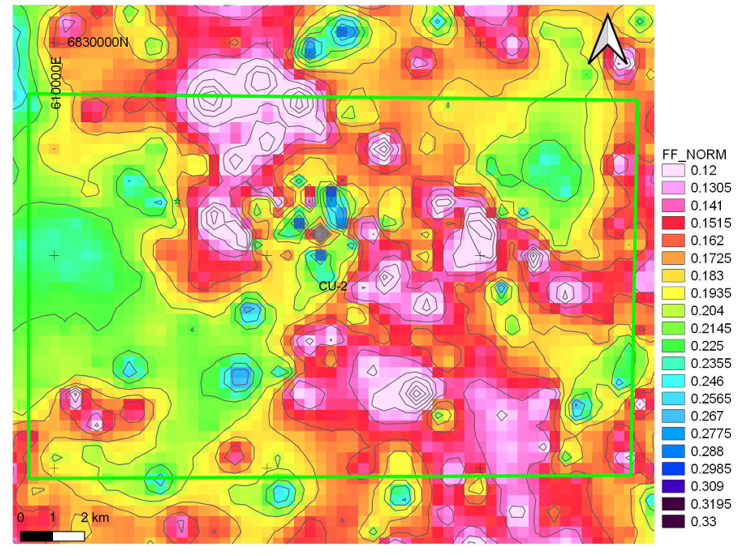
Digital Discovery: Who are we?
A Specialised team of Geoscience Consultants, focused on target generation covering mine-to-regional scale problems. The Team consists of three key personnel (Dr Paul Pearson, Dr John McLellan and Mr Drew Heasman) with more than a combined 100 years of geology and exploration experience. Our holistic approach prioritises and maps out the processes required for the formation of large ore deposits. We have successfully combined Geology, Geomechanics and A.I. Artificial Intelligence (Supervised Machine Learning) to generate optimum targets for exploration and mining. Our approach to delineating high priority mineralisation targets is unprecedented.
The Digital Discovery Team, have successfully proven these techniques as an effective approach to mineral exploration by delivering high quality targets to industry clients, and by winning multiple awards testing new technologies in exploration, e.g.

AUSIMM and EA Australia Excellence Awards: 2011, ‘Winner of the Resources Project of the Year and also Resources Professional of the Year’.

The Integra Gold Rush Challenge: 2016, “Award Winning Finalist employing advanced 3D structural modelling techniques in the near mine targeting exercise for Archaean lode-style high grade gold over the Sigma-Lamaque Mine in Quebec”.

The Gawler Challenge: 2021, “The judging panel chose the solution presented…as the best overall submission due to their unique methodology which could help geologists in the field find that needle in the haystack. Their unique approach may put us one step closer to uncovering new economic mineral deposits in one of the most significant iron oxide copper-gold regions in the world.”

The Frank Arnott Award: 2022, “An esteemed international competition that brings together teams of university students in mineral geoscience to collaboratively innovate and interpret geoscience datasets. Teams transform provided geoscience datasets into interpretations of subsurface geology and mineralization targets.”

Future Explorers Challenge: 2024, “The first-place team, Digital Discovery, was awarded the winning prize for combining mineral systems analysis, geomechanical modelling with machine learning in a model that generated well-reasoned targets. The winning team went above and beyond and were consistently marked highly by the judging panel”
![]()
Prospectivity Analysis:
Digital Discovery strongly emphasizes a ‘Minerals Systems Analysis’ tailored approach to any prospectivity work, which provides greater insights into the Minerals System we are working in. We apply rigorous filtering of datasets and expert interpretation of these data that allows us to achieve a very high confidence level when using these data as inputs into Geomechanical Modelling and A.I. or Machine Learning techniques.

Geomechanical Modelling:
Structural controls are paramount in most hydrothermal mineral deposits, and understanding why, and how, metal laden fluids are transported in a geological system is a vital part of understanding why mineral deposits form where they do. To understand how rocks and structures respond during deformation events is extremely difficult using only ‘classical structural geology’, and the trap here is to collect data/analyse then make generalisations, which are often highly weighted in future prospectivity analyses. Using this ‘classical approach’ may provide many false positives in terms of mineral potential maps. The only way to properly understand the structural response of these systems if to use geomechanical analyses to test and model where stress and strain is partitioned and localised during deformation events. These areas then provide a much clearer understanding of rock failure and fluid pathways.
A Geomechanical approach can be undertaken at any scale and can be used on both 2D and 3D datasets. Regional Greenfields exploration tends to be heavily weighted to a two-dimensional approach, due to datasets being less concentrated and based off 2D interpretations of geochemical or geophysical data. Interpretations of these datasets can provide a good geological interpretation of an area and using a geological and structural framework derived from these interpretations a 2D Geomechanical analysis can pinpoint locations of strain localisation, rock failure and fluid pathways. Similarly, this can be done in three dimensions where good three-dimensional datasets are available, it is particularly useful in and around data rich areas such as operational mines.


A.I. and M.L. (Artificial Intelligence and Machine Learning):
At Digital Discovery, we don’t just apply machine learning—we integrate it with a deep understanding of geology and mineral systems. We recognise that there is no “one-size-fits-all” solution in exploration, and our models are always grounded in the geological reality of each project. Our team brings the field expertise to tailor both the scale and formulation of machine learning workflows to fit the complexity and advance your exploration program.
We use Machine Learning to enhance and accelerate the discovery process—not replace it. Our strength lies in generating geologically meaningful input layers by extracting and prioritising hundreds of derived features from a number of datasets, all built on solid Mineral Systems science. These include spatial derivatives, lithostructural contexts, proximity and relational metrics, predictive alteration patterns, and more.
We understand the methods, the models, and the geology. By combining these intelligent features with Geomechanical Modelling and Mineral Systems analysis, our models go beyond simple pattern recognition. They provide interpretable, data-informed predictions that align with real-world geological processes.
Whether applied to regional targeting or mine-scale drill optimization, our AI/ML workflows are built to enhance geoscientific decision-making, not obscure it.


Exploration Targeting:
The strength in our integrated approach is clearly evident. Combining a strong geological background with a Minerals System approach allows us to always keep the geology at the forefront, and to not simply rely on a modelling or AI numerical approach. However, we recognise that as we work in more ‘data rich’ environments we need more than the human brain to recognise complex inter-relationships within the datasets; this is where a ‘Supervised Machine Learning Approach’ has enormous benefits, as we can start to highlight critical relationships within the data, which might simply not have been recognised using ‘classical techniques. Our experience in 1) understanding the structural controls on mineralisation and 2) modelling the total geological system and predicting areas of rock failure and fluid flow, potentially enables quantum leaps in exploration targeting. Digital Discovery has demonstrated success in predicting unknown mineralisation in numerous mineralised systems across the globe.


![]()
Get in Touch:
Find out how our tailored programs could add value to your exploration program and help you to save time and money.
Please feel free to drop us an email at:

We look forward to hearing from you.